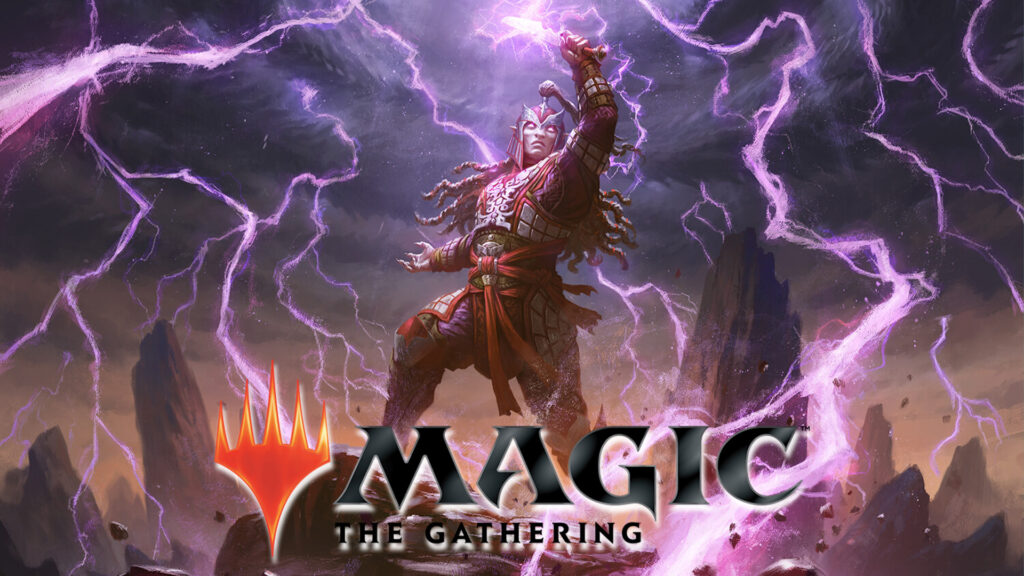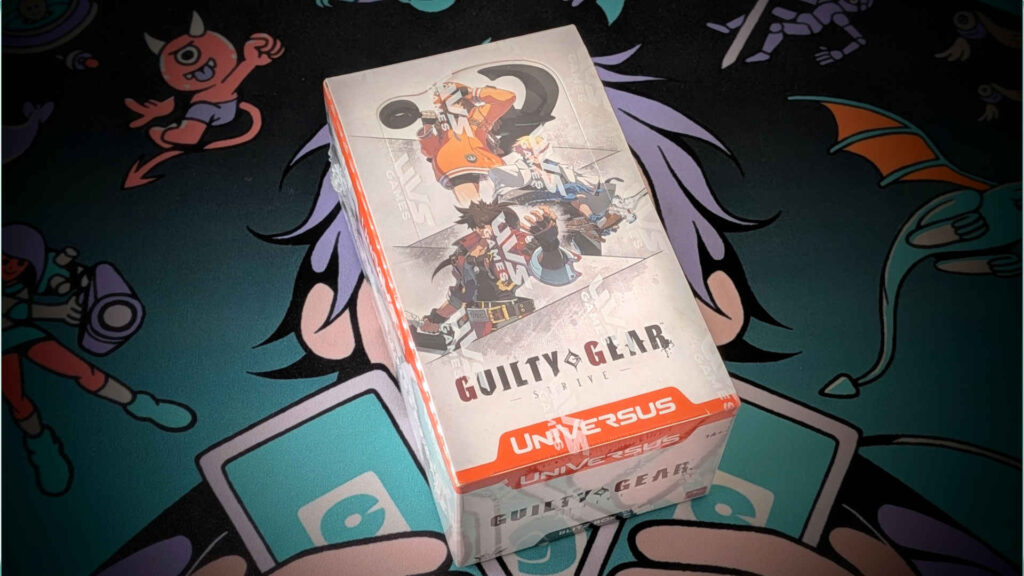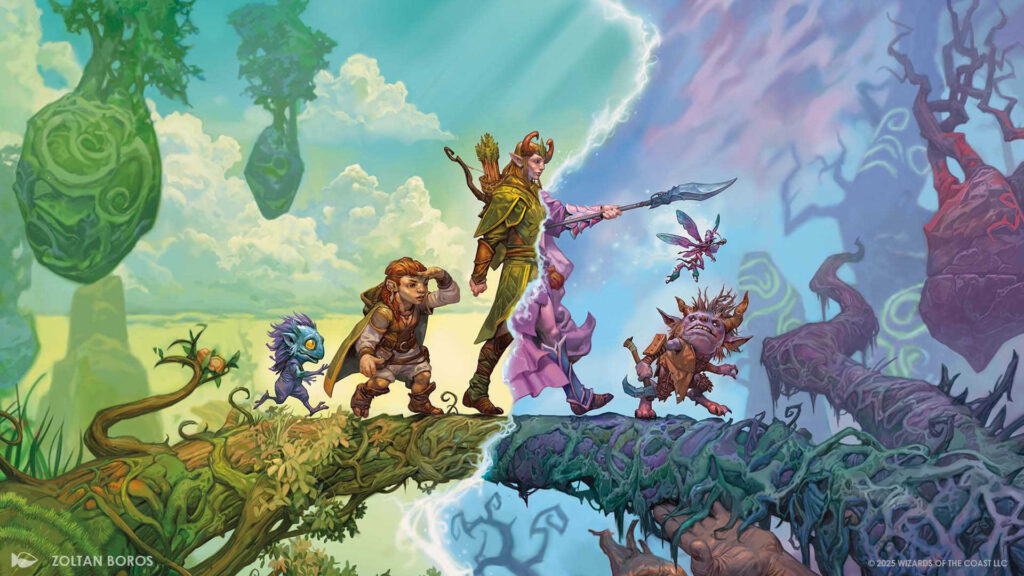Images courtesy of Wizards of the Coast
Tarkir: Dragonstorm Standard is starting off strong, with a ton of cool decks to talk about! Players have been experimenting with new cards in new and existing archetypes alike. I’ve seen new prowess variants, token strategies, and Dragon control decks on top of all of the decks from Aetherdrift Standard. That said, I can’t resist a chance to talk about my boy Abhorrent Oculus! I didn’t get a chance to really dive into the Jeskai Oculus variant last season, and it’s just received some new tools, so let’s break it down!
Table of Contents
ToggleWhat’s the Game Plan for Jeskai Oculus?
Despite having the same reanimation package as Azorius Oculus (which I wrote about in my first article on Card Gamer,) Jeskai Oculus plays very differently. The Azorius version is very reactive and tempo-oriented, whereas this Jeskai version plays much more proactively.
We present a variety of threats that can each set up different synergies, whether that be reanimating an early Abhorrent Oculus or making a huge creature with Proft’s Eidetic Memory. The deck has incredible card velocity, letting us see lots of cards while getting rid of the useless ones later.
The Creatures of Jeskai Oculus
We start out our curve with Spyglass Siren. The Siren looks a little weird in this list, but it really helps smooth things out on a few axes. The Map token is multipurpose; we’re happy drawing a land off of it or placing a +1/+1 counter on an evasive threat while filling the graveyard. In a pinch, it also enables bargain on Torch the Tower.
On top of all that, the Siren pecks in for early damage and wears counters from other sources very well. I’ve seen some lists play Marauding Mako instead, and it has seen some success, so you can play that if you want to try a faster version of the deck that doesn’t run quite as smoothly.
Fear of Missing Out highlights our two-drop slot. It’s an under-costed threat that provides a discard and a draw – two things the deck loves. It’s not unreasonable to get delirium enabled, which can make for some explosive combat steps later.
Inti, Seneschal of the Sun rounds out our early curve and would probably be a full playset if it weren’t legendary. Inti lets us discard a card when we attack with any creature, rewarding us with a +1/+1 counter, temporary trample, and the potential to play a card exiled from the top of our library. This lets us push through a lot more damage while enabling more discard synergies.
Steamcore Scholar and Tersa Lightshatter fulfill similar roles here. Both provide discard and draw and present real threats. Steamcore Scholar isn’t a fast threat, but wears counters well and gives you more control as you sculpt your hand since it draws before discarding. Meanwhile, Tersa comes out swinging as a 3/3 with haste and can potentially let you play a random card from your graveyard.
Of course, we round out the threat suite with one of my favorite cards in the format, Abhorrent Oculus. You don’t need to be sold on the power of this Eye; it’s a huge flyer that continues to flood the board and fill the graveyard. The question is how to bring it out, and this deck is very good at that. We can easily reanimate it after discarding it to any number of other spells, or we can just hard cast it by filling up the graveyard.
The Spells
We start off with two cheap reanimation spells. Helping Hand and Recommission can both bring back any of our creatures, as they all have a mana value of three or less. The dream is to get Abhorrent Oculus back early, but you’re still getting a great deal bringing back any of the two- or three-drops.
Proft’s Eidetic Memory really helps tie the deck together. At minimum, it’s a cantrip and a +1/+1 counter, but we draw so many cards that it ends up presenting a lot of extra damage. We don’t even mind that it’s legendary, as we still get to cantrip when we play our second copy! Suiting these counters up on a big flying threat (or a trampler courtesy of Inti, Seneschal of the Sun) can make otherwise unassuming creatures into big problems.
Winternight Stories is a card I heavily considered talking about in my Top 10 Standard Cards for Tarkir: Dragonstorm article. It might not be as efficient a draw spell as something like Stock Up, but it’s much more valuable when you care about actually drawing the cards (and discarding creatures). It’s not bad to discard to something like Steamcore Scholar either, since we can harmonize it if needed!
We round out the nonlands with our removal package. Torch the Tower is one of the premier one-mana removal spells in the format, just behind Cut Down. The exile effect continue to be very relevant, and, as said before, we can enable bargain with Map tokens from Spyglass Siren.
Glacial Dragonhunt isn’t a card I expected to see play, but it makes sense here. At worst it’s another cantrip, but it can also be a combination removal/discard outlet when needed. This spell also has harmonize, so it can continue to provide value from the graveyard. It can be clunky at times, but it works as a two-of.
The Lands
There’s not a ton of options when it comes to enabling fast three-color decks, but this mana base feels pretty solid. We run every fast land we can alongside a ton of pain lands and a pair of Thundering Falls. There’s not much wiggle room here, as we do usually need all of our colors early and can’t afford many tapped lands.
The Sideboard
Destroy Evil – Our main deck removal fails to hit bigger targets like Sheoldred, the Apocalypse or Archfiend of the Dross. We also can’t hit enchantments, and the format continues to be filled with powerful enchantment engines like Caretaker’s Talent and Up the Beanstalk. This card solves both problems.
Sheltered by Ghosts – Another multi-purpose removal spell, albeit one with more value against aggressive opponents that want to pressure your life total. I want this against red-based prowess decks for sure!
Pyroclasm – This cheap sweeper helps against token decks, particularly convoke decks and new prowess variants utilizing Cori-Steel Cutter.
Ghost Vacuum – Mandatory graveyard hate. You’ll need this for opposing Oculus decks and all flavors of reanimator.
Negate – A counterspell against traditional control decks, but you can bring this in against any deck relying on big noncreature spells (sweepers and reanimation spells especially). I’ve seen some players opt to split this slot with Spell Pierce, which is totally valid.
Tishana’s Tidebinder – There’s a ton of situations where a well-timed Tidebinder can cause your opponent headaches. I mostly like it in more midrange matchups, though it can also effectively stop Zur, Eternal Schemer in its tracks. It’s an easy card to bring in when you see relevant targets and have some number of cards you really want to cut for a given matchup.
Chandra, Spark Hunter – Chandra is another card meant for those grindier matchups – especially control. The 3/2 Vehicle doesn’t get stopped by most sweepers, and her +2 provides another way to rummage. She also has a threatening ultimate, which will eventually win you the game.
Tips and Tricks for Jeskai Oculus
- A lot of our sideboarding process here comes down to asking how good removal is in the current matchup. We can easily cut Torch the Tower and Glacial Dragonhunt when they’re bad, and likewise can cut our slower card draw like Winternight Stories when we need to play to the board early.
- Pixie decks relying on Hopeless Nightmare can easily have it turned against them if you discard a big creature to reanimate early. A turn one or two Abhorrent Oculus enabled by your opponent can nearly guarantee a victory all on its own!
- Glacial Dragonhunt is worded very weirdly. While you can discard a land to it, you don’t get any direct benefit from doing so. Additionally, the three damage to target creature upon discarding a nonland isn’t optional, so you may not want to use it as a discard outlet if your opponent doesn’t have any creatures out.
- A large portion of our mana base comes in tapped later in the game. While you might still need to play your fast lands late, consider keeping them in hand as discard fodder.
- Your opponents will often feel forced to bring in graveyard hate, but the deck is more than capable of fighting through it. Thanks to all of our looting and rummaging we can just get rid of cards like Helping Hand when they’re not useful. I’d still want to take out a few of the reanimation spells when I know my opponent is bringing in graveyard hate, but you don’t need to sideboard it all out. They’ll still sometimes not draw into it fast enough.
There’s still a lot to explore in Tarkir: Dragonstorm Standard, but I’m very happy starting out with another cool Oculus deck. As always, thank you so much for reading, and I hope you’ll be back for our next Standard Deck Breakdown!
Want to read up on Tarkir: Dragonstorm draft? I’ve got a draft guide you can check out here!




